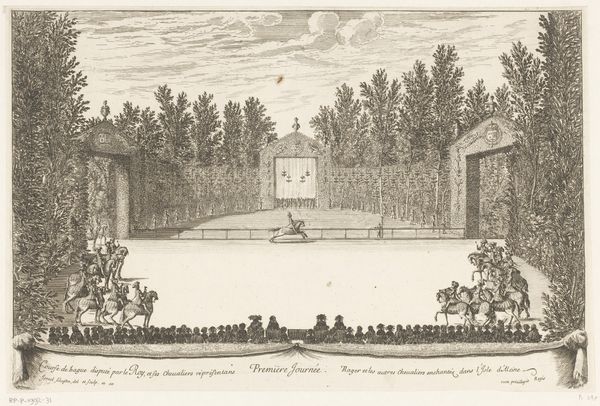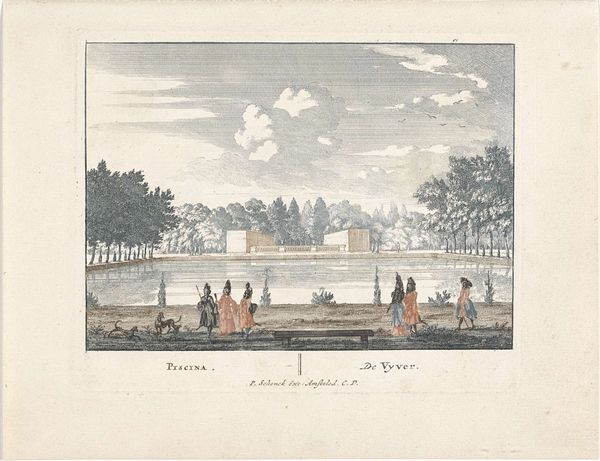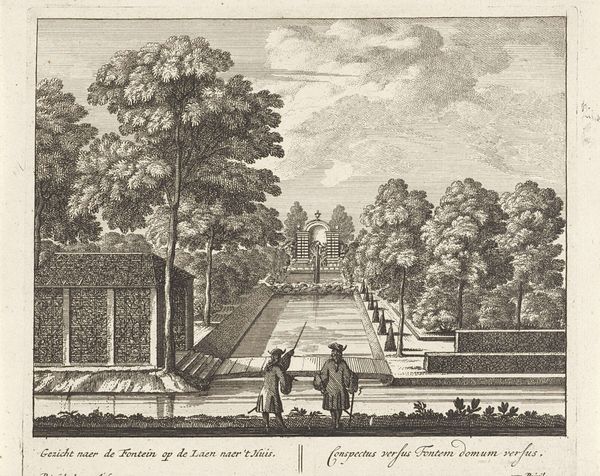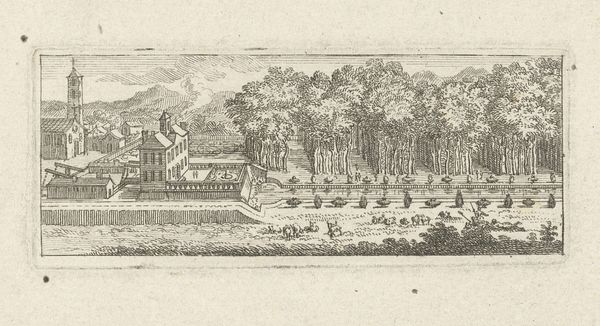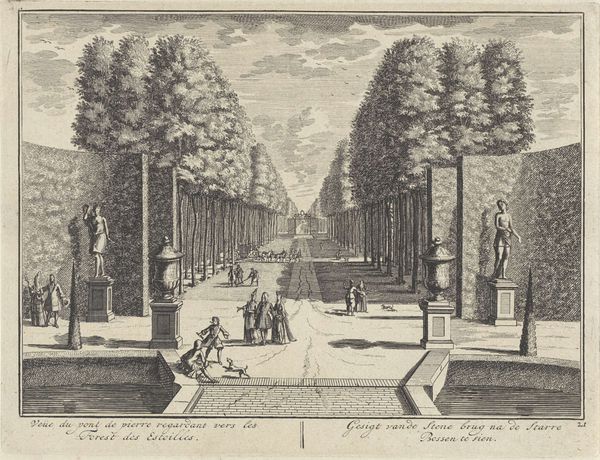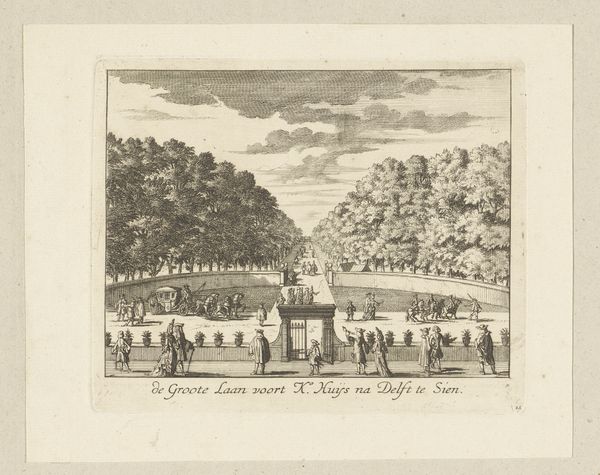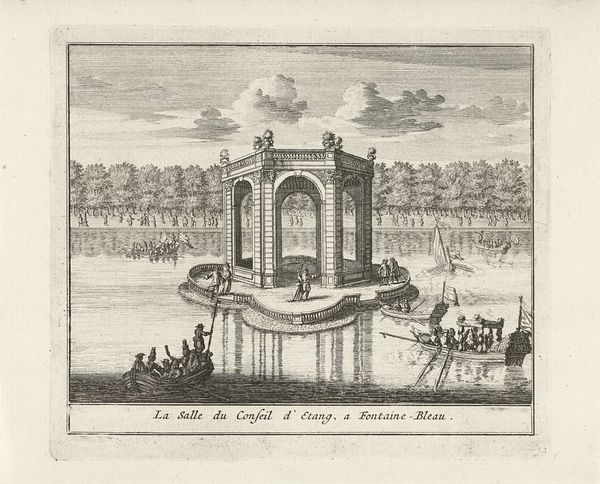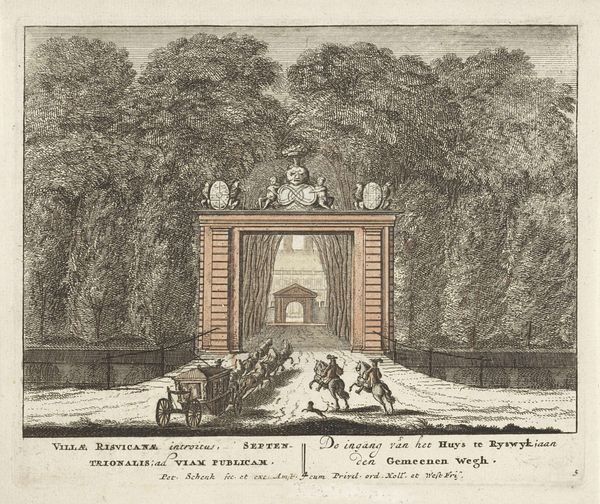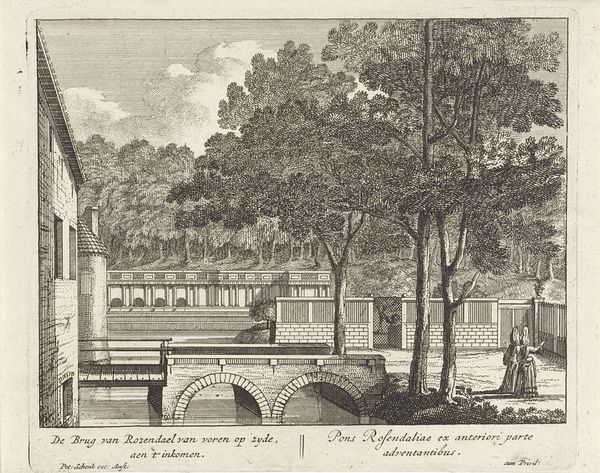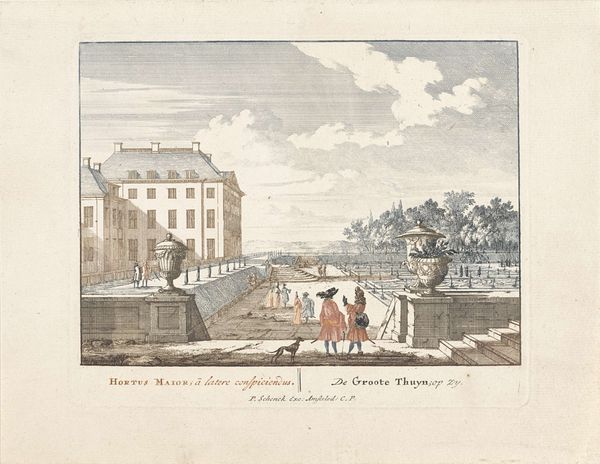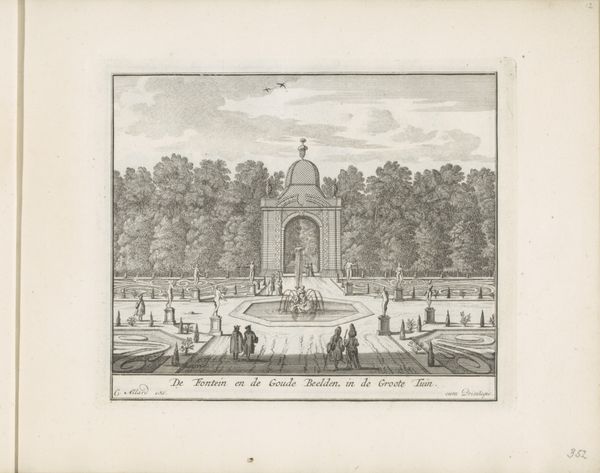
print, engraving
#
baroque
#
dutch-golden-age
# print
#
landscape
#
engraving
Dimensions: height 162 mm, width 197 mm
Copyright: Rijks Museum: Open Domain
Pieter Schenk created this print of the rear of Huis ter Nieuburch in Rijswijk sometime between 1660 and 1711. The print offers a glimpse into the world of the Dutch elite, showcasing their residences and manicured gardens. But it's not just a neutral depiction. Note the figures in the foreground. They aren't simply placed there; their attire and posture signal status and wealth. They walk and converse, against the backdrop of meticulously designed nature, reflecting the control and order favored by the ruling class. This image prompts us to consider the power dynamics inherent in the Dutch Golden Age, and the legacy of colonialism and trade that enabled such displays of affluence. The wealth that built these estates was directly linked to global trade networks, including the exploitation of enslaved people. By subtly emphasizing the contrast between human artifice and natural resources, Schenk's print invites us to contemplate the social and economic structures underpinning this seemingly idyllic scene.
Comments
No comments
Be the first to comment and join the conversation on the ultimate creative platform.
